It is now almost ten years since Oliver Roellinger gave back the three Michelin stars he cooked up at La Maison de Bricourt restaurant in the North Breton port town of Cancale in 2008, when the restaurant closed. Since then, Roellinger has devoted himself to the world of spices, still offering upscale gastronomy, and has now enlisted another member of the family, his son Hugo, in addition to his wife Jane, to further develop the Roellingers’ culinary empire. The House de Bricourt has become the Houses de Bricourt. A wide variety of industries have found their home under this name umbrella. These include the Épices Roellinger spice line with three stores, a cooking school in Cancale, the Grain de Vanille, a delicatessen store also in Cancale, and the Le Coquillage restaurant in neighboring St. Méloir des Ondes. Then, in the summer of 2016, the Maisons de Bricourt’s newest properties opened: La Ferme du Vent and La Maison de Gwenn. Both are located just 500 meters from the picturesque Château de Richeux. In its lobby, we meet Hugo Roellinger after a first night at Ferme du Vent.
Click here for the report on La Ferme du Vent in Brittany
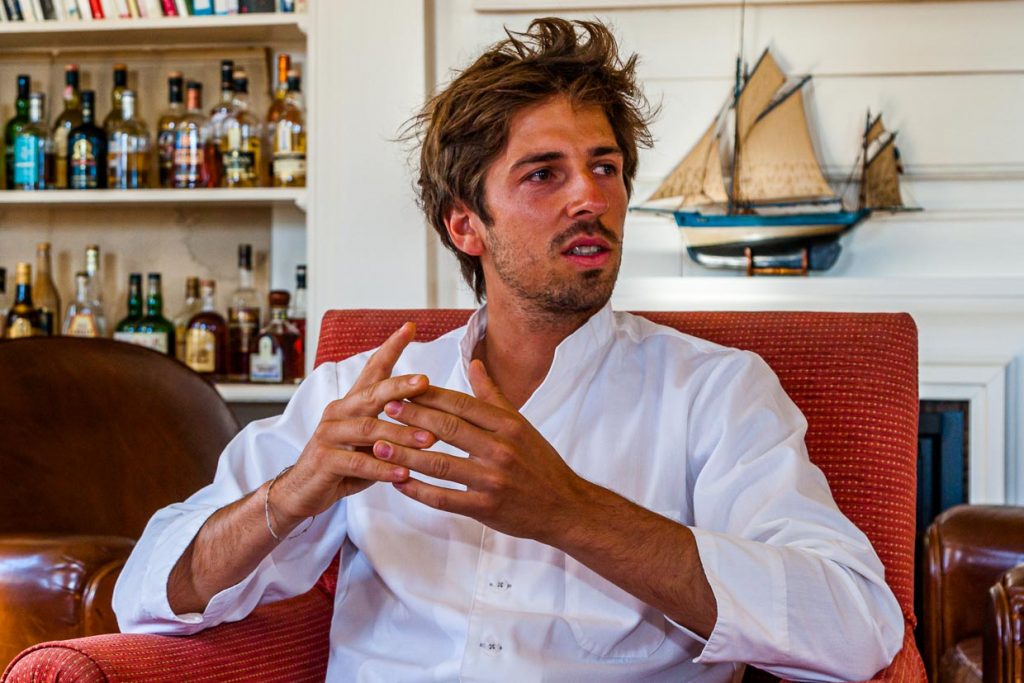
Spices are key at Le Coquillage
Spices, says Hugo Roellinger, are also memories for him of the time of the Breton corsairs. These privateers brought spices to St. Malo. The cuisine at Le Coquillage communicates about these spices, but does not want to be an exotic cuisine or imitate the cuisines of other continents. On the contrary, the idea here is to combine the gifts of nature that are on your doorstep with the memories of the time of the corsairs and to tell the story of this place.
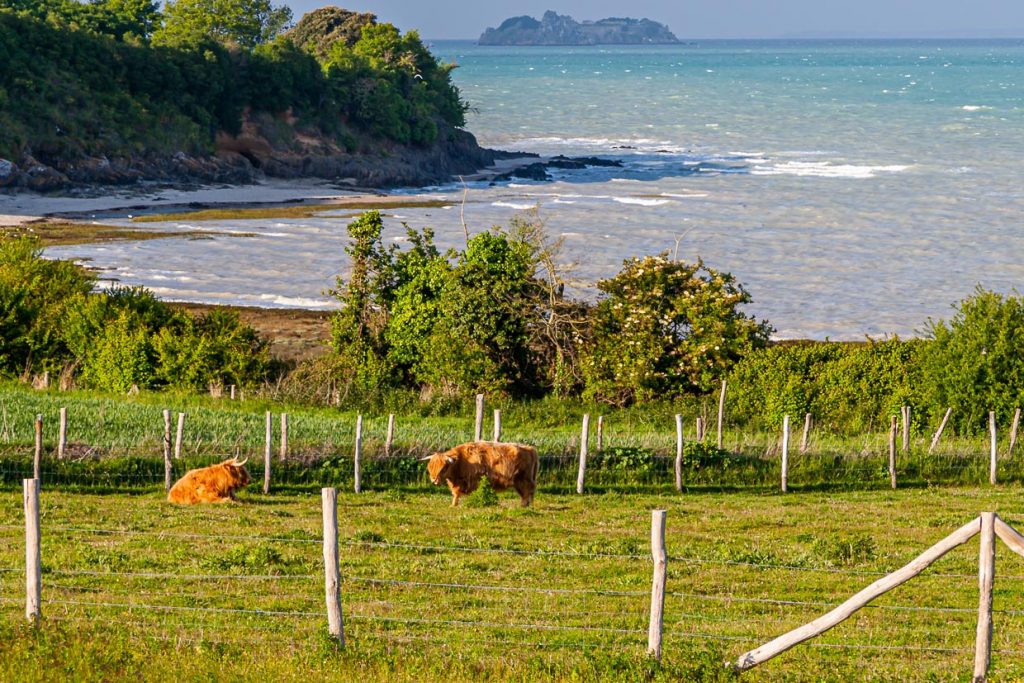
Freshness and regionality are extremely important to Hugo Roellinger. The vegetables come from the farmers in the immediate neighborhood, the fruit from his own gardens, the herbs from the beautifully landscaped herb garden right next to the restaurant. And not to forget the sea cuisine. Because of it, father Olivier Roellinger’s restaurant La Maison de Bricourt once became a pilgrimage site for star hunters. All of this combines to create a cuisine that is very close to nature and influenced by local specialties. At Le Coquillage, Hugo Roellinger now works as a chef. After his training as a chef and several stations abroad, he decided to go his own way and completed further training as a naval officer. After several years at sea, including for the Breton ferry company Brittany Ferries, he was drawn back to the bay of his childhood.
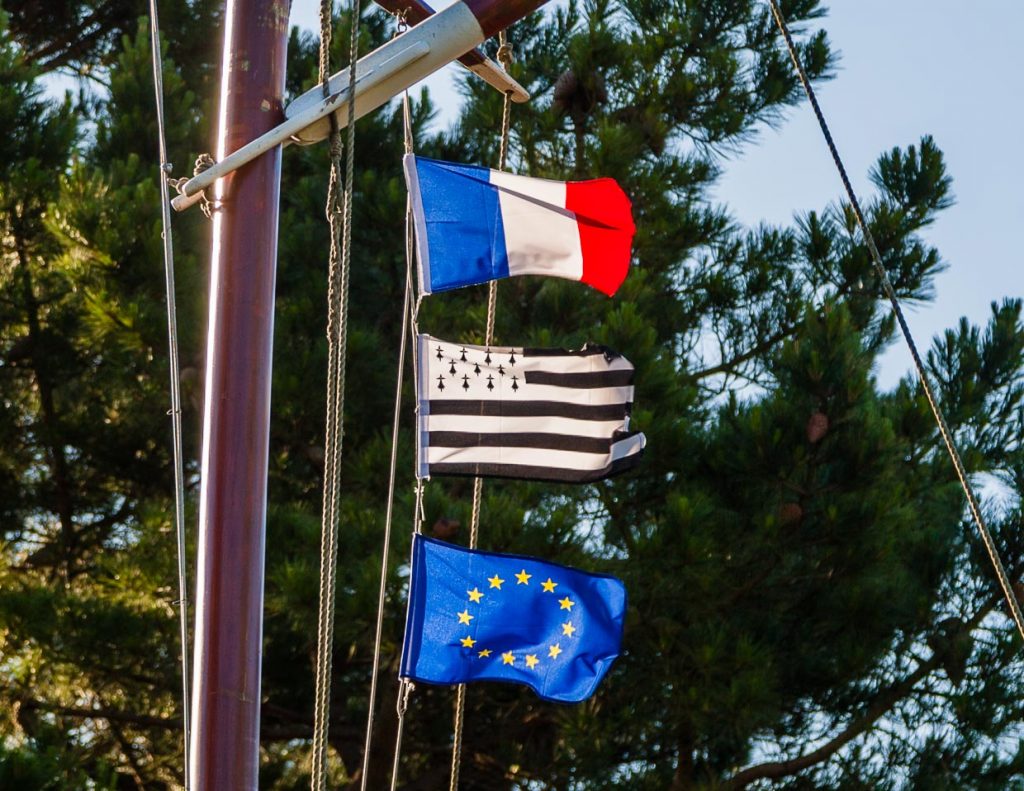
The horizon as inspiration
The horizon, says Hugo Roellinger, inspires him. He grew up, just like his father, with the legends of the old sailors who brought the most exotic spices to the country. St. Malo was a major trading center back then. Trade caravans also left the port of Cancale for India and Madagascar. In the old days, Hugo Roellinger knows, you could smell the merchant ships before you could see them. Hugo spent his childhood at the Maison de Bricourt, his father Olivier’s restaurant. This house, built in 1760, was already Olivier Roellinger’s childhood home. The villa, which once belonged to ship owners, is also said to have been the childhood playground of Robert Surcouf, the legendary Breton privateer. Surcouf fought against the English and successfully captured their merchant ships. Privateers are pirates who sail the seas with an official letter of marque from their government. Today, Oliver Roellinger creates his spice blends in this place. And from here he still sets sail every day and goes on culinary discoveries.
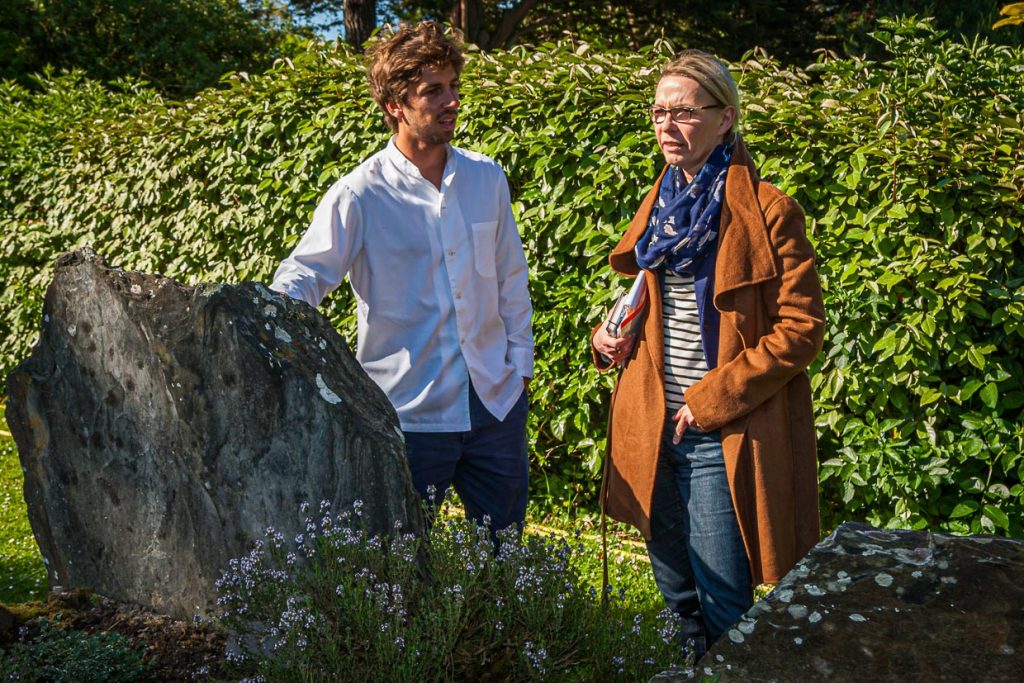
Lobster, chili, sherry for Daniel de la Touche
So it is not surprising that many dishes and also spice blends bear allusions to the time of the Breton corsairs. Oliver Roellinger’s signature dish pays homage to the sailor Daniel de la Touche, who set sail from the port of Cancale and returned with chili, cocoa and vanilla. Lobster with cocoa and three kinds of chili and a sauce based on sherry, which was traded in barrels and used to be a means of payment, has never been off the menu at the Roellingers. On the lobster meat you can really taste the three degrees of spiciness of chili and for Hugo Roellinger the taste of his childhood is condensed in this dish.
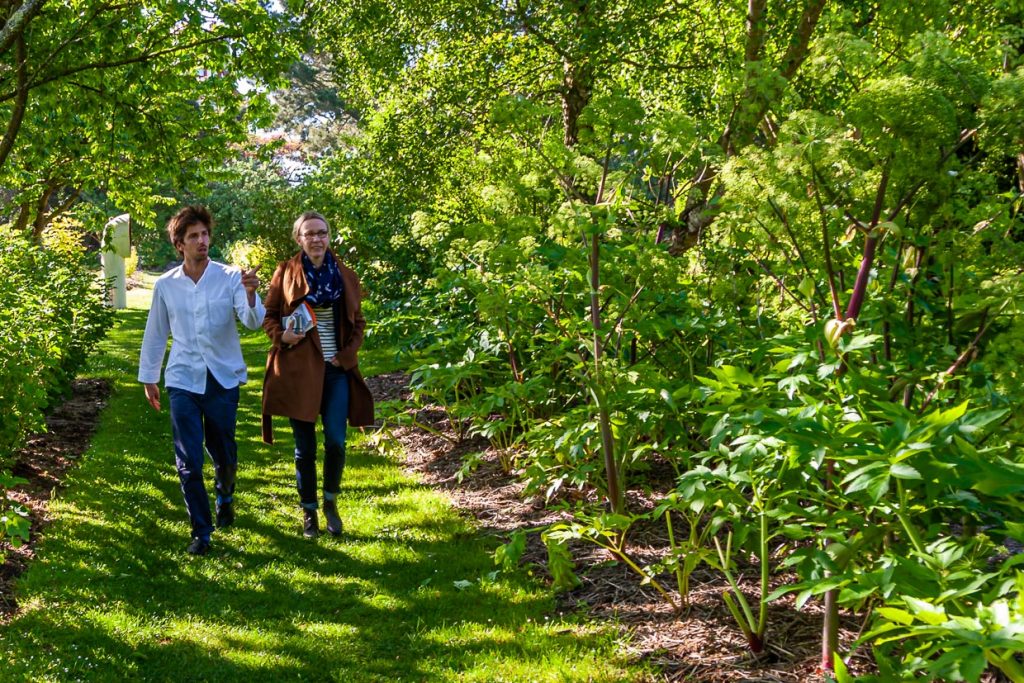
Hugo leads me through the gardens of Château Richeux to the Ferme du Vent. Here in a meadow old apple varieties have been planted. There is a hut where bread is baked twice a week or fish can be smoked. Fish and seafood, Hugo Roellinger emphasizes again and again, are a big topic; especially the oysters of Cancale. They are said to be the best in the country, because the water in the bay of Mont St Michel has a high plankton content and this has a positive influence on the taste of the oysters.
A transformation from stone to life – oysters
In the evening, our dinner at the Kled des Ferme du Vent also included a plate of wild oysters. The muscle meat of the wild oyster is much firmer and its flavor has a definite pepper note towards the end. So it would be far too bad to use spices or acids here.
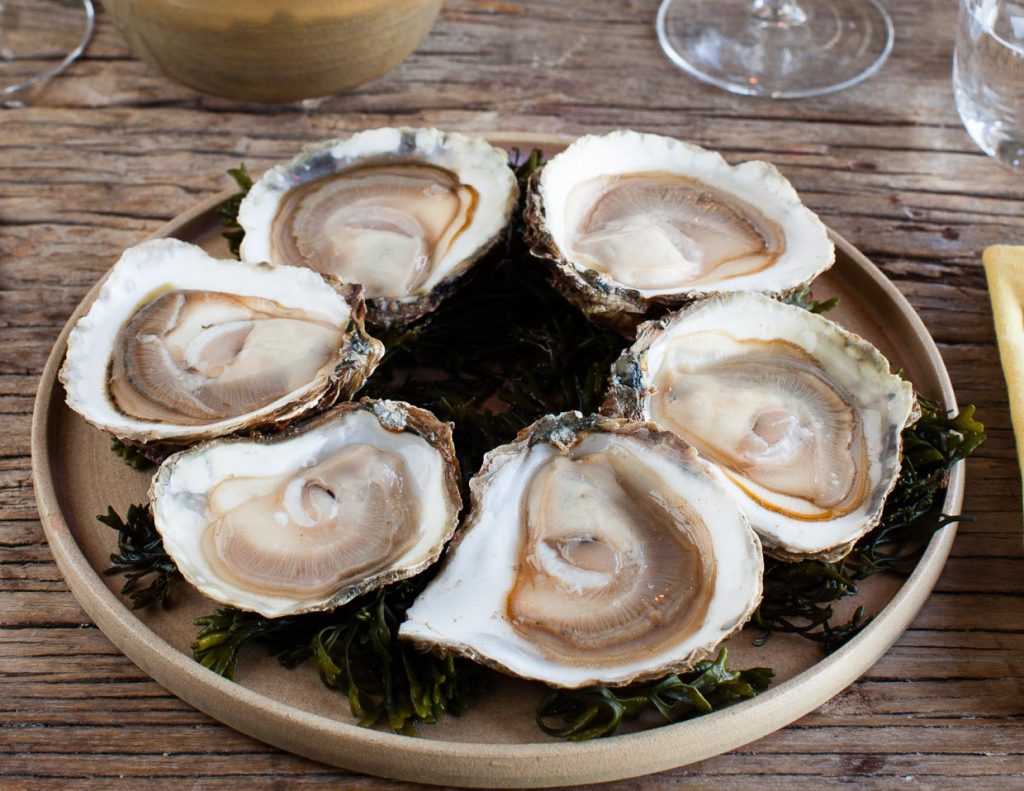
Hugo Roellinger has his own philosophy on wild oysters. For him, an oyster is the transformation of stone into life. It tastes of life and also of death. Because the taste also reminds him of what it might be like to drown in the sea; the death of many sailors.
Besides the wild oyster and its very special taste, Hugo Roellinger also mentions the Breton hand-dived scallops. When diving, nature is respected and only the animals that are big enough are taken out. Because it is the diver who chooses where to reach. And the hands that have dived the scallops sell their catch in the kitchen the same day, presenting the animals with their hands – these hands of the divers are for him another symbol of a cuisine close to nature.
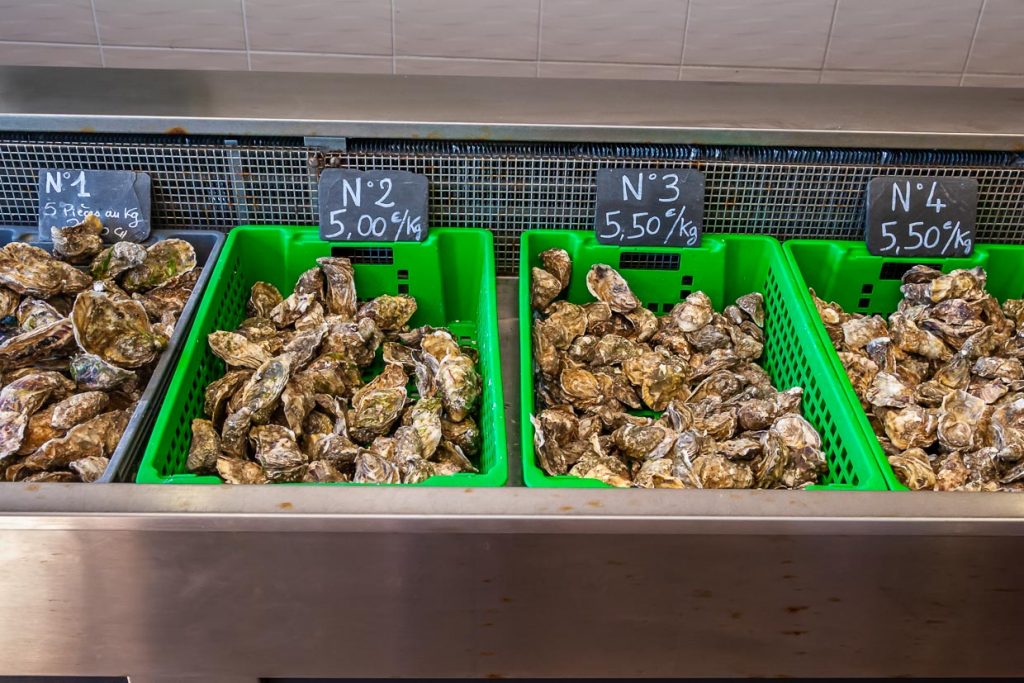
Reportage about La Ferme du Vent in Brittany
Reportage from the crossing with Brittany Ferries
The cost of half board was not charged by the hotel

